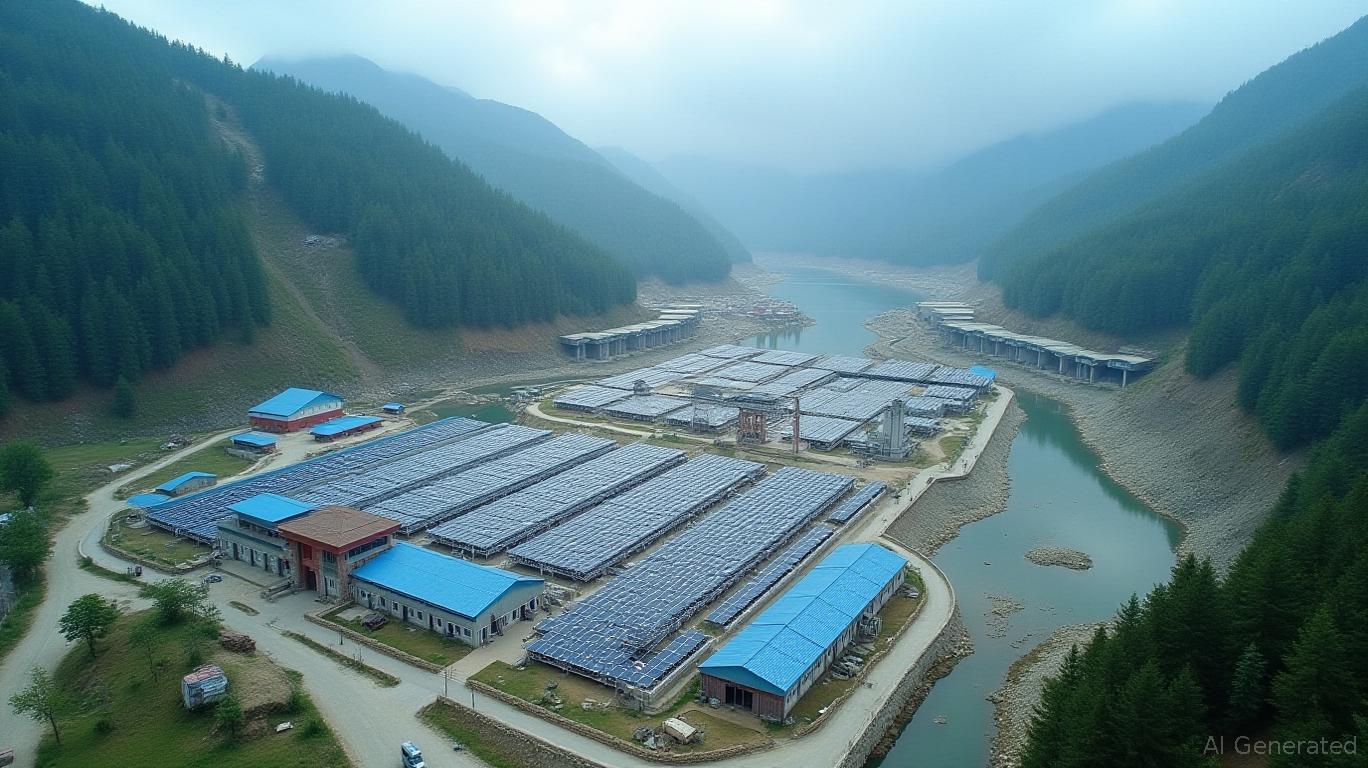Bitdeer's Self-Mining Expansion: A Catalyst for Bitcoin Mining Profitability and Market Dominance
The Bitcoin mining landscape is undergoing a seismic shift, driven by the aggressive expansion strategies of industry giants like Bitdeer Technologies Group. As the company accelerates its self-mining capacity to over 40 EH/s by October 2025, its geographic diversification and infrastructure investments are reshaping profitability dynamics and consolidating market power. For investors, understanding Bitdeer's moves is critical to gauging opportunities—and risks—in this high-stakes sector.
The Scale of Bitdeer's Expansion: A Blueprint for Dominance
Bitdeer's Q2 2025 plans reveal an ambitious push to solidify its position as a global mining powerhouse. Its self-mining hashrate surged to 13.6 EH/s in May, up 18% from April, with 9.0 EH/s of SEALMINER A2s already manufactured and an additional 1.5 EH/s in final assembly. By October, the firm aims to exceed 40 EH/s, a nearly 200% increase from May levels, powered by its next-gen ASICs like the SEALMINER A3 (testing complete) and A4 (targeting 5 J/TH efficiency by Q4 2025).
This expansion isn't just about hardware. Bitdeer is building infrastructure to match:
- Norway's Tydal site will reach 120 MW capacity by June, with hydro-cooling systems reducing energy waste.
- Bhutan's Jigmeling site, now at 132 MW, is set to add 368 MW by Q3, leveraging hydropower at $0.036/kWh—one of the lowest costs globally.
- A 50 MW project in Ethiopia, acquired for $7.5 million, adds to its low-cost footprint, with electricity priced at just $0.036/kWh under a 4-year PPA.

Geographic Diversification: Shielding Profitability from Volatility
Bitdeer's global strategy isn't just about cost efficiency—it's a hedge against regulatory and geopolitical risks. Over half of its 1.6 GW target capacity by June 2025 will be outside the U.S., with key sites in Norway, Bhutan, and Ethiopia. This reduces reliance on U.S. energy markets, where rising electricity prices and regulatory uncertainty (e.g., Texas's grid reliability concerns) threaten margins.
The financial implications are stark. A mining rig in Bhutan or Ethiopia can operate at ~$0.03–0.04/kWh, compared to $0.06–0.10/kWh in the U.S. or Canada. With Bitcoin's block reward halving in 2024 already pressuring profitability, low-cost capacity is a moat against smaller miners who cannot compete on scale or energy costs.
Market Consolidation: The Death of Small Miners and Rise of Titans
Bitdeer's expansion is accelerating a trend toward market consolidation. Small miners, already struggling with rising operational costs and halving-induced revenue pressure, face insurmountable challenges against firms like Bitdeer. Consider:
- Economies of scale: Bitdeer's 100,000 self-owned mining rigs and 221 MW under construction in Ohio allow it to negotiate bulk discounts on hardware and energy.
- Technological superiority: The SEALMINER A4's 5 J/TH target would outpace competitors' ASICs by ~40% in efficiency, cutting power costs per hash.
- Capital flexibility: A $200M loan facility secured via Matrixport, plus $50M from Tether's warrant exercise, provides liquidity to outbid rivals for sites and equipment.
The result? Smaller miners are forced to sell assets or shut down, consolidating hashrate into Bitdeer's hands. This strengthens its market power and reduces competition, enabling it to dictate pricing in the cloud-mining and hardware markets.
Risks and Contingencies: Can Bitdeer's Strategy Succeed?
While Bitdeer's moves are bold, risks loom:
1. Regulatory hurdles: Projects in Bhutan and Ethiopia depend on stable permits and energy supply. A policy shift (e.g., export bans on Bitcoin) could disrupt operations.
2. Bitcoin price volatility: Mining profitability is tied to BTC's price. If BTC remains below $30K, even low-cost miners may struggle.
3. HPC/AI pivot: Pausing Clarington, Ohio's 570 MW site to explore AI opportunities is a gamble. If AI demand doesn't materialize, capital tied to idled infrastructure could erode returns.
Investment Implications: Buy the Trend, but Watch the Risks
For investors, Bitdeer's trajectory offers two opportunities:
1. Bitcoin bulls: Bitdeer's hashrate growth directly correlates with Bitcoin's security and adoption. Investors bullish on BTC's long-term price should see Bitdeer as a beneficiary of rising demand.
2. Hardware and infrastructure plays: Bitdeer's ASIC sales (e.g., 2.9 EH/s of A2s shipped externally) and partnerships (e.g., Fox Creek, Alberta's natural gas site) suggest ancillary gains for companies supplying energy or equipment.
Recommendation:
- Aggressive investors: Allocate to Bitcoin (BTC-USD) or Bitcoin ETFs (e.g., GBTC), leveraging Bitdeer's hashrate growth as a bullish catalyst.
- Conservative investors: Monitor Bitdeer's competitors (e.g., Riot Platforms (RIOT), Marathon Digital (MARA)) for M&A opportunities as smaller players falter.
Conclusion
Bitdeer's self-mining expansion is a masterstroke—a blend of geographic diversification, technological innovation, and strategic capital allocation that positions it to dominate Bitcoin mining. While risks exist, the company's scale and cost advantages make it a key beneficiary of Bitcoin's long-term growth. For investors, riding this trend could yield outsized returns—but staying vigilant on regulatory and macroeconomic shifts is essential.
Final thought: In mining, the biggest fish survive. Bitdeer is swimming upstream—and it's not alone.

Comments
No comments yet